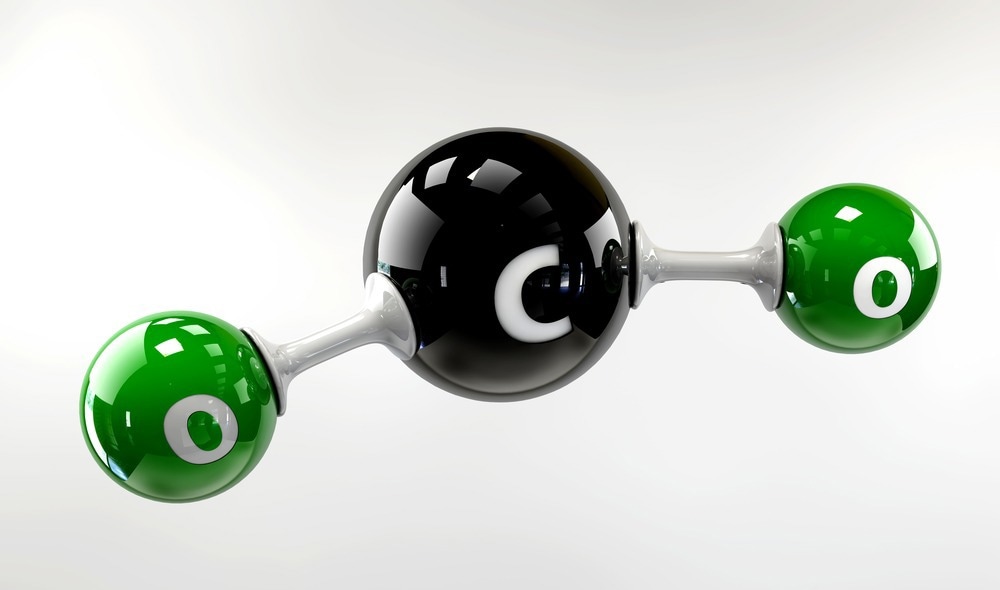Reviewed by Alex SmithJan 16 2023
The mechanism of the coverage-driven selectivity shift from ethylene to acetate in high-rate CO2/CO electrolysis has been unraveled by a research team headed by Profs. Xinhe Bao, Guoxiong Wang, and Dunfeng Gao from the Dalian Institute of Chemical Physics (DICP) of the Chinese Academy of Sciences (CAS).

Image Credit: Victor Josan/Shutterstock.com
On January 12th, 2023, the study was published in the journal Nature Nanotechnology.
The electrolysis of CO2 to useful chemicals and fuels using renewable energy as a power source has emerged as a viable carbon capture, utilization, and storage technology.
The high selectivity of multicarbon (C2+) products at industrial current densities is extremely desirable for pushing the CO2 electrolysis process toward practical implementation. Tuning the microenvironments surrounding catalyst surfaces has also been shown to be useful in increasing C–C coupling and C2+ production.
The scientists optimized the catalyst microenvironment in this work by employing mixed CO/CO2 feeds that were characteristic of waste gases from steel plants and partial industrial combustion of fossil fuels. They specifically explored CO/CO2 co-electrolysis in an alkaline membrane electrode assembly (MEA) electrolyzer at high current densities over a nanoporous CuO nanosheet catalyst.
With increasing CO pressure in the feed, the major product gradually shifted from ethylene to acetate and the current density remarkably increased, up to 3.0 A cm-2 under 0.6 MPa pure CO feed.
Guoxiong Wang, Professor, Dalian Institute of Chemical Physics, Chinese Academy of Sciences
Prof. Gao states, “The selectivity switch was induced by *CO coverage and local pH. Ethylene was preferentially generated at low *CO coverage, whereas acetate formation was favorable at high *CO coverage and high local pH.”
The scientists improved electrolysis performance even further by improving electrolysis conditions. The Faradaic efficiency and partial current density of C2+ products were 90.0% and 3.1 A cm-2, respectively, equating to 100.0% carbon selectivity and 75.0% yield, exceeding thermocatalytic CO hydrogenation.
The CO electrolysis process was scaled up using a stack of four 100 cm2 MEAs, with the greatest ethylene synthesis rate of 457.5 mL min-1 at 150 A and acetate formation rate of 2.97 g min-1 at 250 A.
Our work highlights the promise of tuning catalyst microenvironments for selective production of single C2+ products such as acetate and ethylene, and presents an effective scale-up demonstration of high-rate CO2/CO electrolysis towards practical application.
Guoxiong Wang, Professor, Dalian Institute of Chemical Physics, Chinese Academy of Sciences
Journal Reference:
Wei, P., et al. (2023) Coverage-driven selectivity switch from ethylene to acetate in high-rate CO2/CO electrolysis. Nature Nanotechnology. doi.org/10.1038/s41565-022-01286-y.